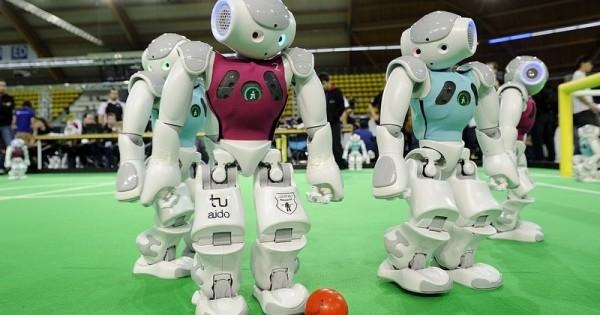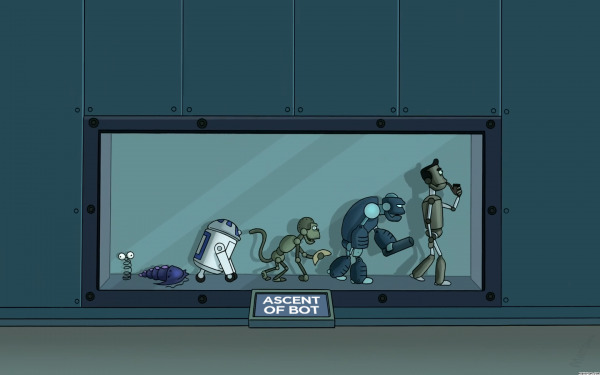Are We Ready To Embrace Robots In Everyday Life?
Sentient machines have long been considered an inevitable part of our future, and every year we come a little closer to seeing that belief become reality. DARPA has resulted in an impressive array of powerful machines, and researchers across the globe have tasked themselves with ever-improving our mechanical counterparts. Though there's still a long way to go before humanoid bots are working alongside us, the reality of interacting with robots in our everyday life has never been closer, and that poses a serious question: are we ready?
This past week, Japan's prime minster Shinzo Abe revealed an ambitious plan: the creation of a "robotic revolution", which he hopes will transform Japan in the coming decades. This would be ushered in with the first-ever Robot Olympics in 2020, the natural progression of long-running robot games like the RoboCup. The Robot Olympics would serve as a showcase for the current state of the industry, and would hint at the way robots may one day be a part of our life.

Many breakthroughs have been made in the area of robotics in recent times – a team in Paris recently put a robot through physical therapy of sorts, for example, teaching it how to overcome an injury (in this case, a broken leg). The robot determined the best method to relearn how to walk on its own, a necessary preparation for a future where machines will have jobs the same as humans.
The promise is grand: machines will take over jobs that put humans at risk; they'll be more efficient, more precise; they'll eventually lead to a society where the average human is unburdened from menial labor, able to pursue more noble tasks that would, potentially, increase the rate of exploration, discovery, and innovation. They could, we hope, bring about a world like the one Google's Larry Page recently spoke of.
But as with all things, our nearing robotic future is a frightening one for some, and concerns abound. If robots begin taking over jobs, questions of economy arise. Beyond this, we're compelled to ask: what degree of freedom should autonomous robots have? To what degree should robots be made autonomous?

Earlier this summer, the UN held an unofficial meeting on so-called killer robots and potential limitations that may be necessary in the relatively near future. At the heart of the matter was whether, in this case, a robot should be free to make potentially lethal decisions without a human first determining whether that robot's decision is acceptable.
Questions and fears like these are nothing new, of course, only more pertinent now that the reality is upon us. Back in the 90s, for example, as the first serious push for self-driving cars arose, critics were vocal with their fears – fears revolving around money, around necessity, around safety.
In 1993, during the height of the first push for self-driving vehicles, Marcia Lowe had this to say in an article titled Smart Cars: A Really Dumb Idea:
IVHS would put computers in charge of everything from timing the traffic signals to deciding which route each car should take – and, eventually, to doing the actual driving.
In the early stages, a dashboard screen would display maps while a synthesized voice would purr directions to the driver. Later would come the crowning glory of IVHS, the Automated Highway System. Once commuters keyed in their destination, they could just sit back and enjoy the ride – maybe even take a nap. Cars would hurtle along, bumper to bumper, at speeds measured in miles per minute ...
Unfortunately, IVHS is unlikely to live up to its splendid claims. The goal of increased safety is far from guaranteed. Drivers of smart cars may be distracted by all the messages flashing at them. A system-wide failure of a data-processing network controlling a highway full of smart cars would give new meaning to the phrase "computer crash."
A healthy dose of concern is necessary for keeping a proper balance, but fear that technological achievements and pursuits will, in some way, be to our detriment has haunted progress for as long as humans have been working towards something bigger and better. It has served to stifle, to instigate, to manipulate. And yet, using self-driving cars as an example, the future dreamed of and scoffed at merely 20 years ago is now at our doorstep, and this time it isn't going away.
The question, then, remains: are we finally ready to put our fears aside and embrace it?
